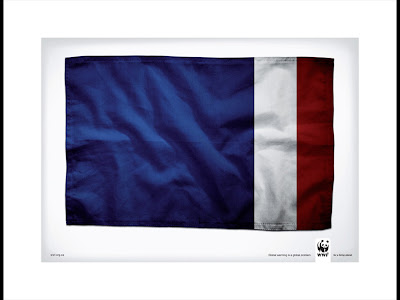








Flags are filled with national symbols that do nothing more than summoning an emotional connection.
Immediately and widely recognisable, bold and colourful, flags are the most commonly used national symbols in twentieth-century war propaganda.
They are such potent, powerful and familiar visuals, in fact, that graphic designers would often use only the national colours to convey their message.
At the Sirdab, we are fond of flags. Click on the 'flag' tag & see for yourself... However, our pick this time is the French flag.
Parody is another means of contemporary communication often used by engaged artists & activists alike. Have a look at these subverted French flags; the message is, for the most, clear and loud, as the parody used is to generate some sort of awareness around major issues. The emblems designed are highly politically charged.
For more on flags, culture-jamming and spoofs, click on flags.
We bet that you'll find an unexpected archive of 'flagedelic' imagery gathered and brought to you by the Sirdab.
We bet that you'll find an unexpected archive of 'flagedelic' imagery gathered and brought to you by the Sirdab.








































